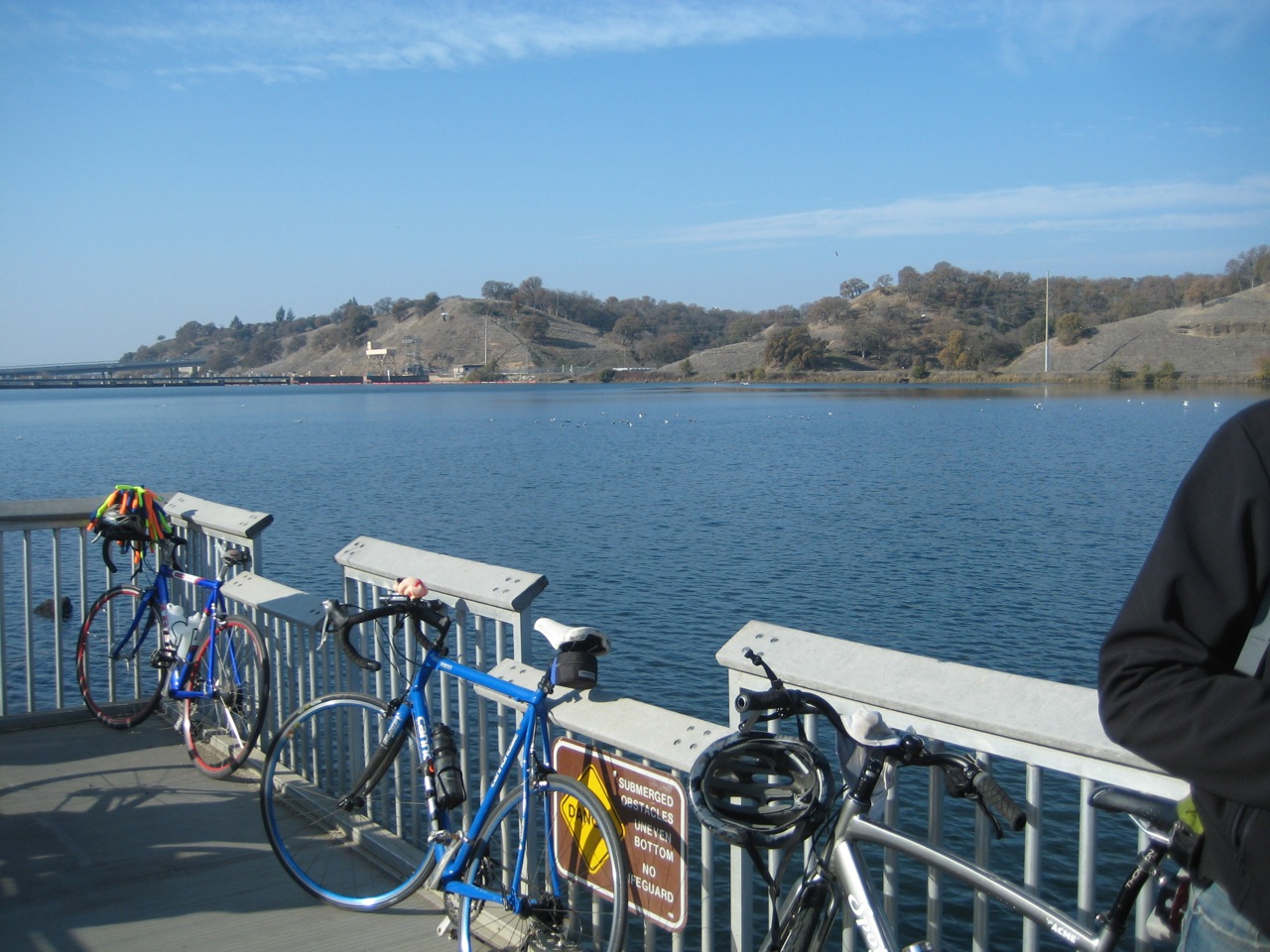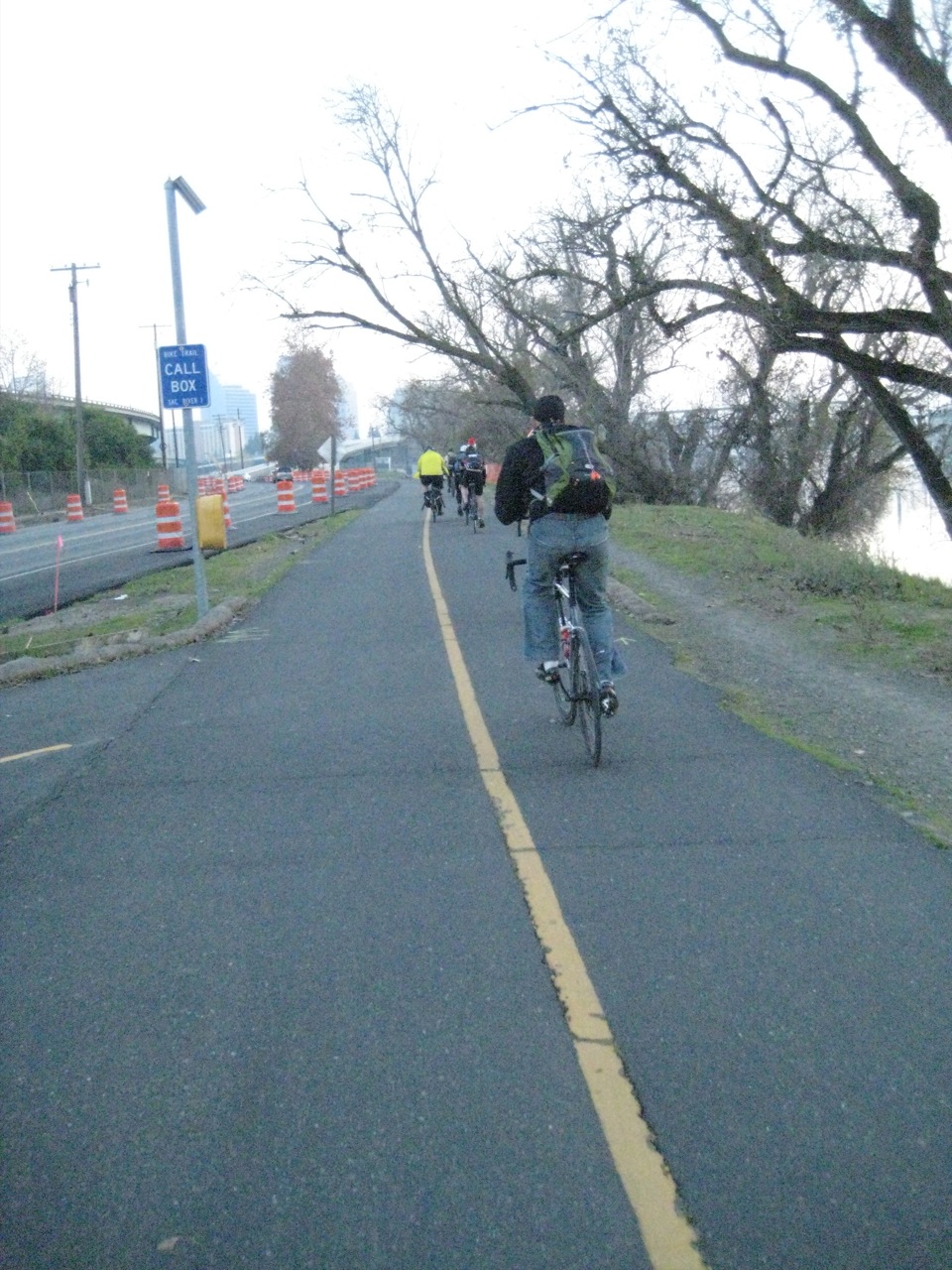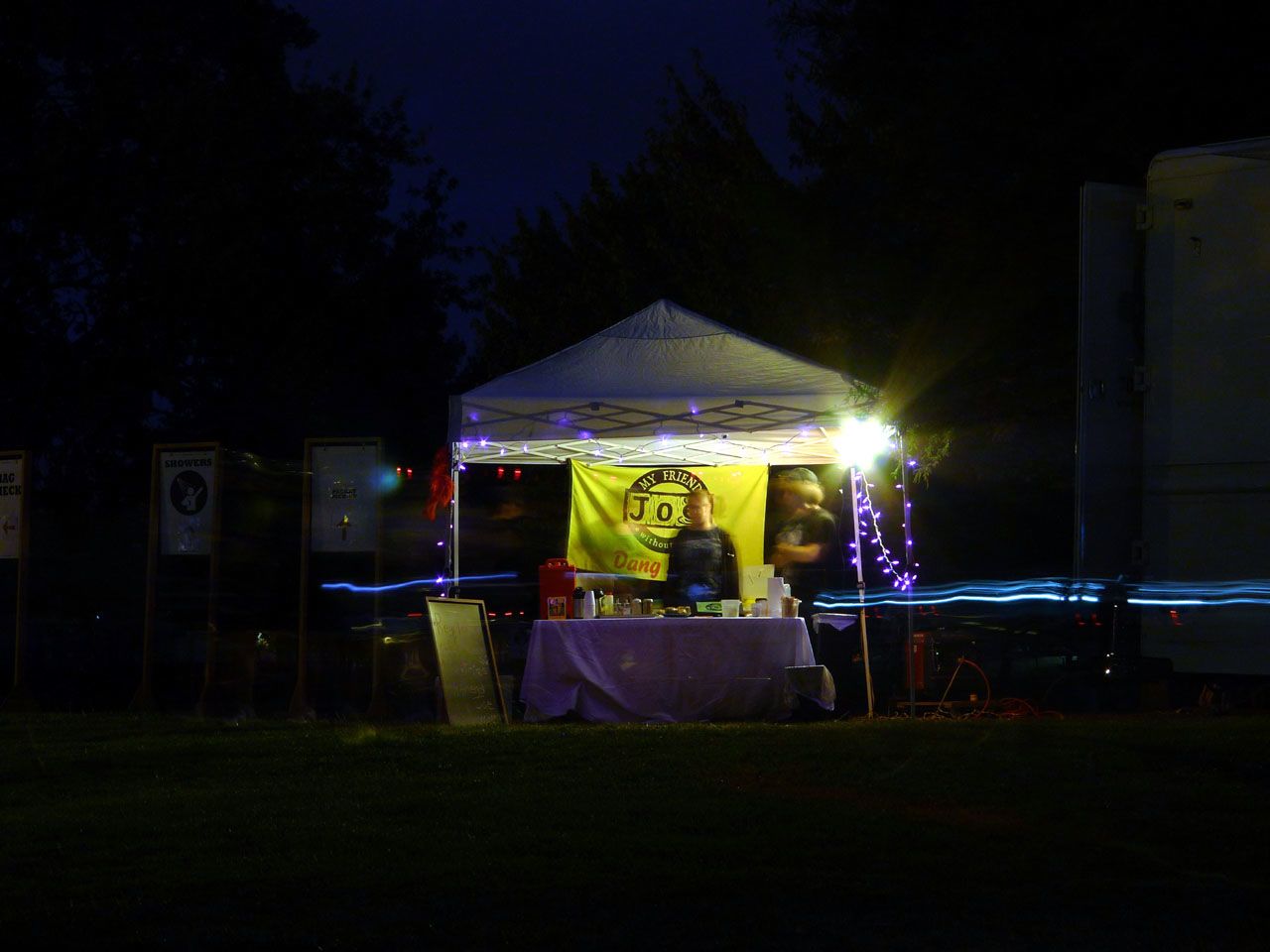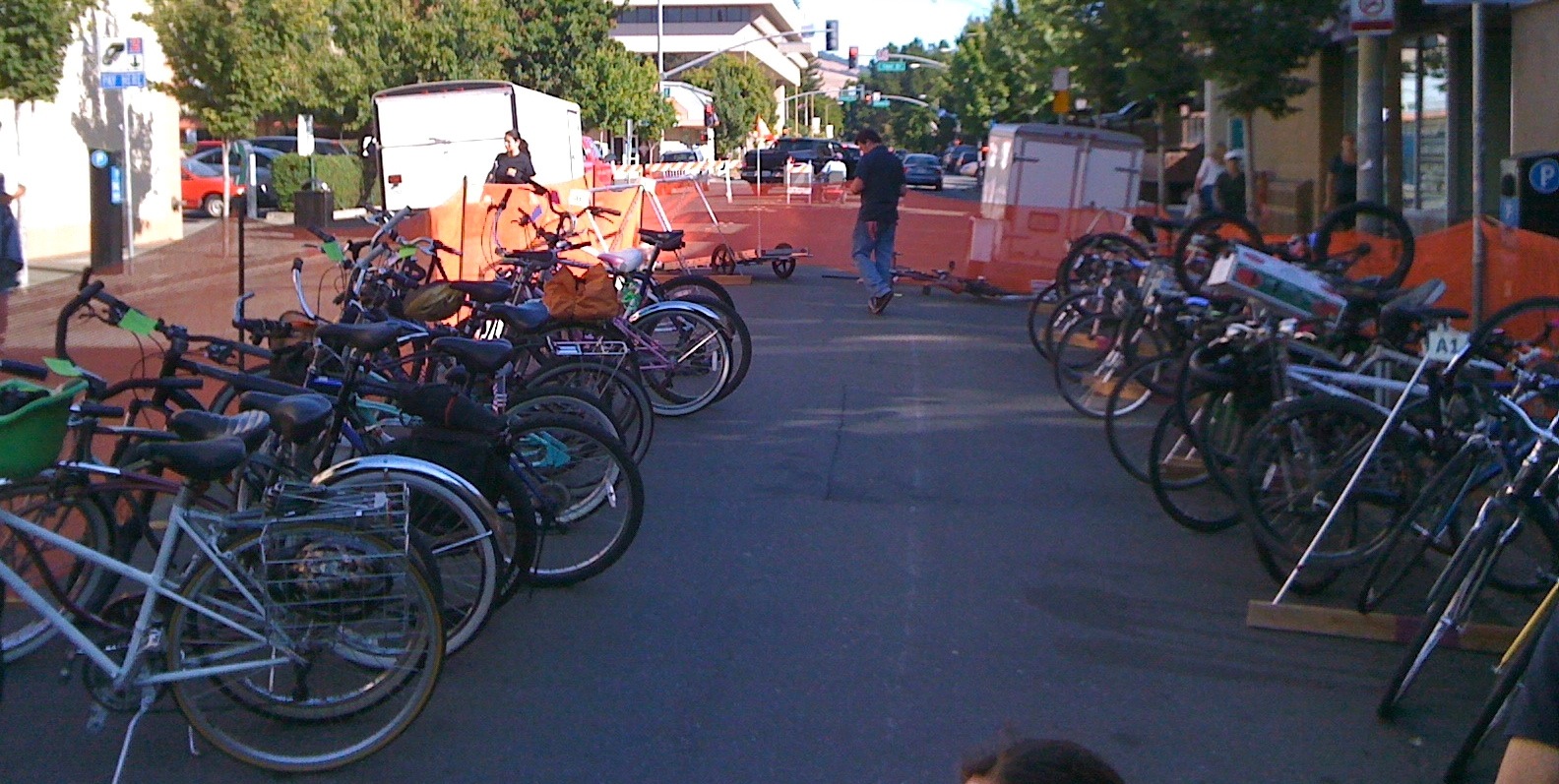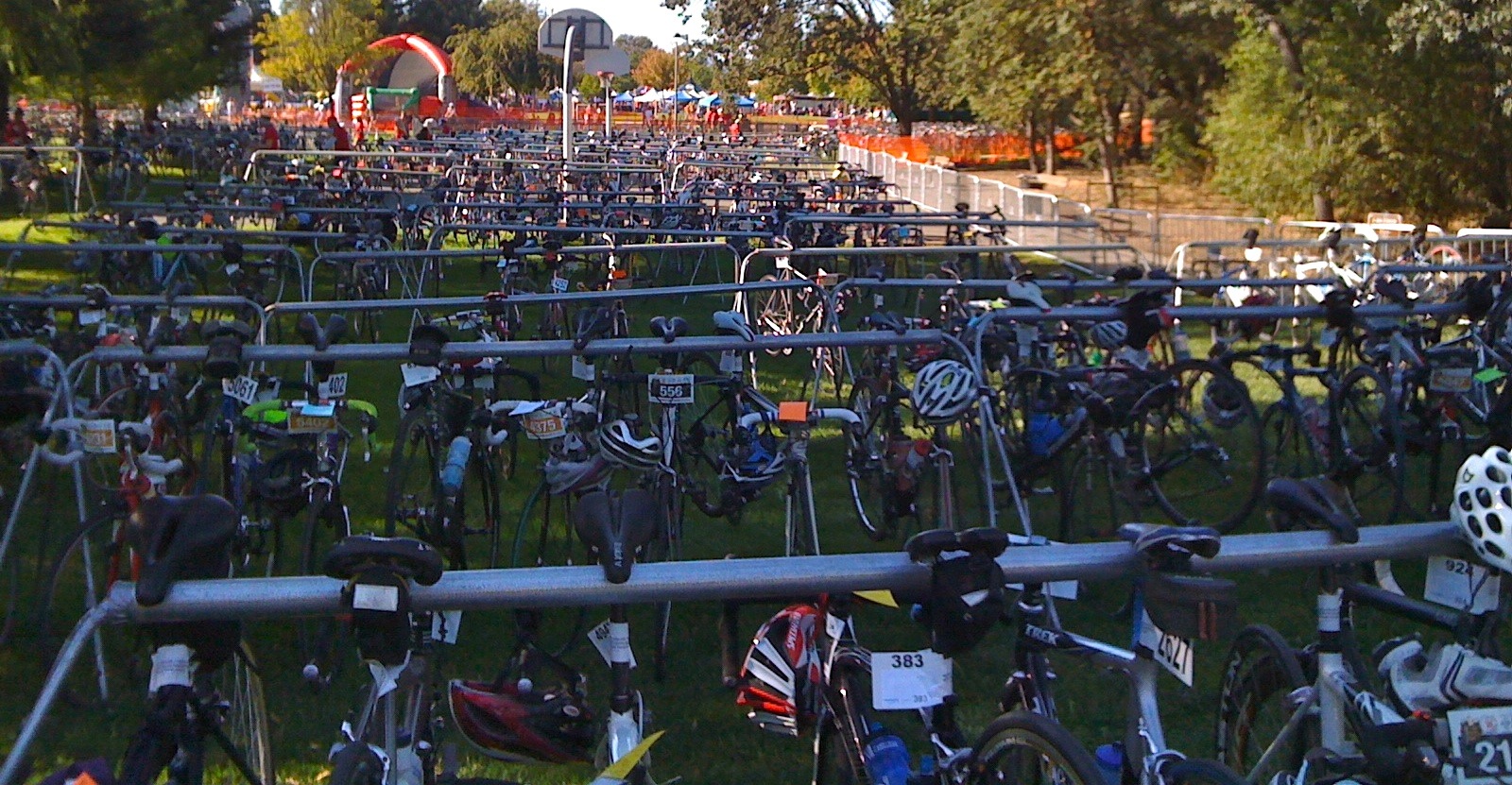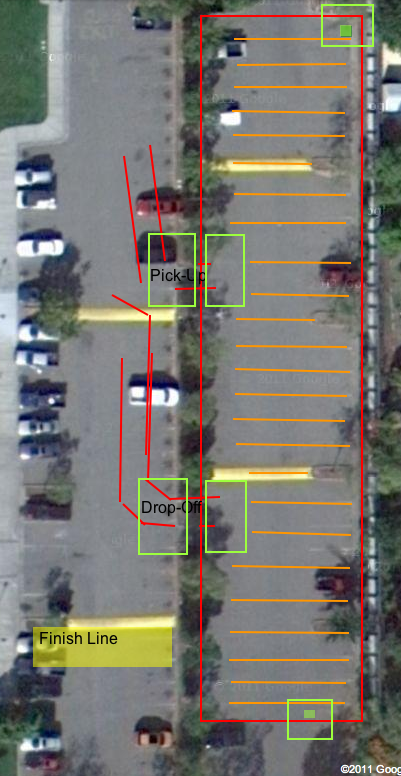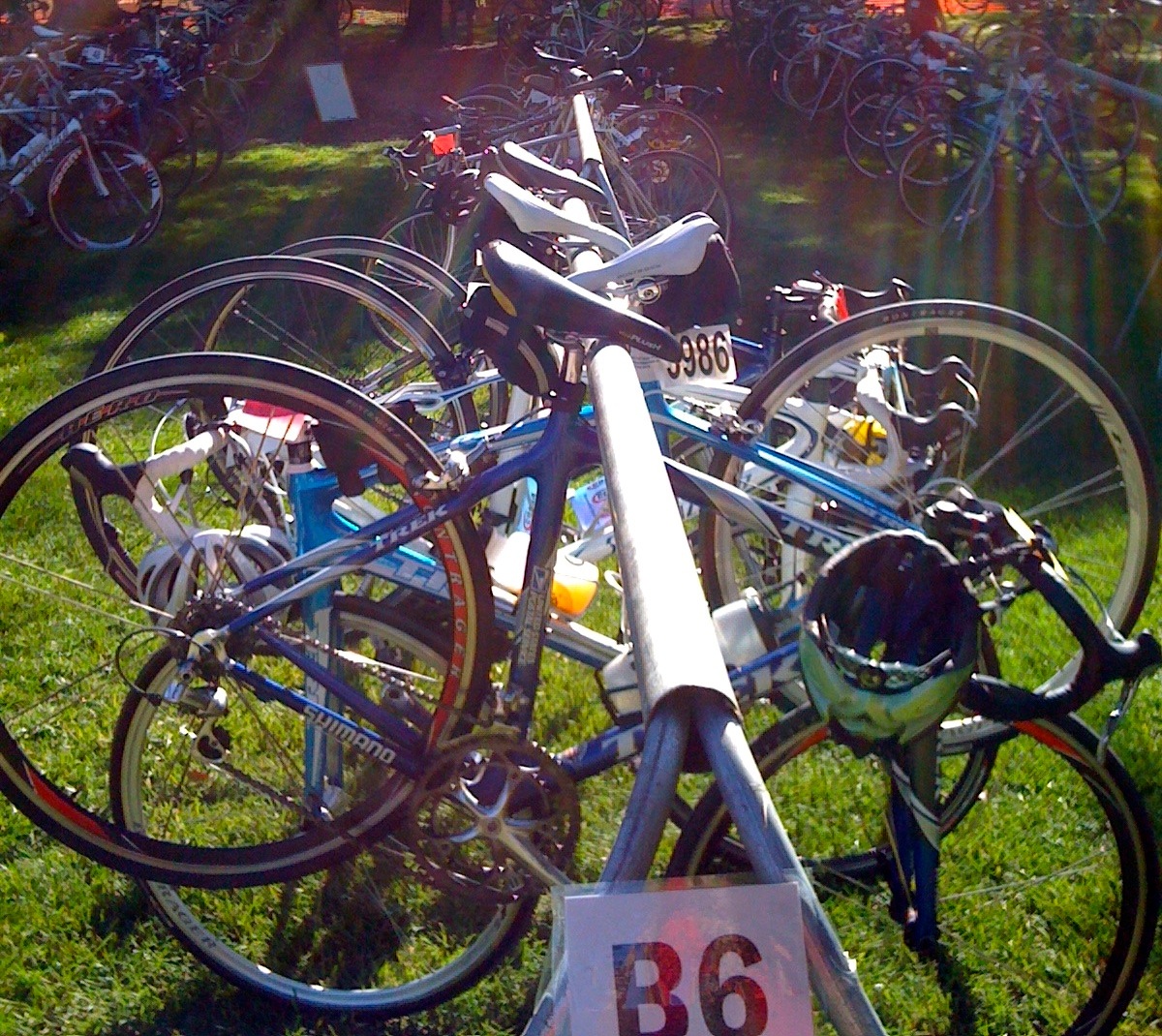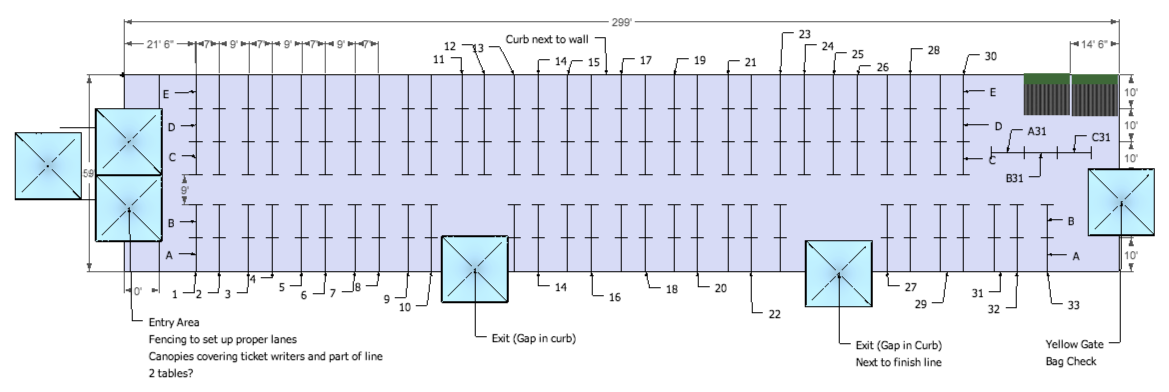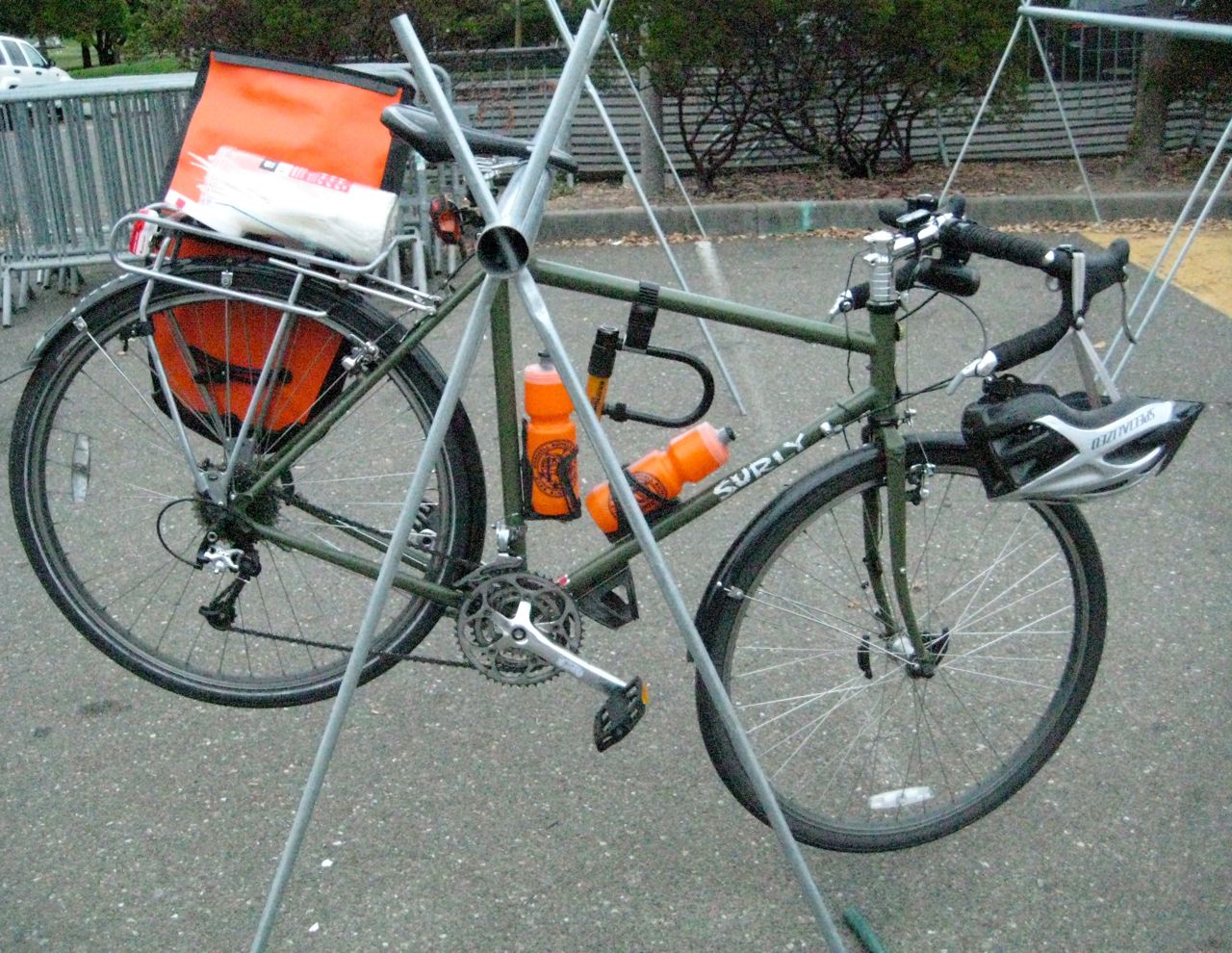Author Archive
US Citizens: Act Now To Save Bike Infrastructure!
Sorry to all the non-US folks that read this blog; this doesn't directly affect you.
There's currently activity in both houses of Congress affecting funding for cycling (and walking) infrastructure. If things go wrong in Congress, we could end up with a lot fewer bike lanes, bike paths and sidewalks and move more towards a totally car-centric infrastructure.
The current Senate transportation bill (MAP-21) weakens walking and biking programs. To improve the bill, bicycle advocates are asking senators to vote for a bipartisan amendment to guarantee local governments a voice in transportation decisions and allow them to build sidewalks, crosswalks, and bikeways that keep people safe.
In the House, cycling advocates are asking representatives to oppose the House transportation bill. Despite the fact that walking and bicycling infrastructure is a low-cost investment that creates more jobs per dollar than any other kind of highway spending, the House bill eliminates dedicated funding for walking and biking altogether.
Learn more and contact your senators and representative about this issue.
Obligatory disclaimer: none of this represents the official stance of Stack Exchange.
A great place to ride: American River Bicycle Trail, Sacramento, CA, US
Apparently there is a long tradition with a certain group that on the shortest day of the year (or nearest convenient day), there's a bicycle ride down the American River Bike Trail. This year I was invited along by the executive director of my local bike advocacy group (which I'm on the board of).
The trail is historical and beautiful. It was one of the first trails specifically made for bicycles in the US, and one of the longest purpose-built paved bike paths in the US. It's about 30 miles long and follows the American River from Folsom to Sacramento. It's essentially 30 miles of park with a nicely paved trail running the length of it, bridges where needed, etc. Lots of parks of various sizes along the way, from tiny little "one picnic table with a view" parks to big sprawling parks. Some of the parks have big parking lots, so if you don't want to ride the whole distance you can start there.
We used light rail to get from Sacramento to Folsom and then rode the downhill/downstream direction of the trail.
The day started at 5:45am, when my bike and I were picked up for a drive down to San Rafael. We met up with somebody, rode about a mile and met up with the truck that drove us to Richmond while we nervously watched the bikes jiggling around on the overloaded rack.
In Richmond, we got on Amtrak to Sacramento, then on a light rail to Folsom. Had a bit of breakfast on the Amtrak ride consisting of food people brought along, such as some homemade gingerbread and banana bread.
The usual tradition in this ride is that there's a rainstorm and epic suffering, but the weather was fantastic this year, so I put away both upper layers that I'd brought along and went until evening in shorts and a t-shirt.
After the light rail, there was a very short ride up a hill to our second breakfast, for kicking off the ride.
Then after that, a ride over to the trail, and off we rode.
Most of the trail is lightly shaded with trees and really quite pleasant.
Our ride ended in Old Town Sacramento, a historic tourist-attracting neighborhood that happens to be right next to the Amtrak station to get us back to Richmond. We got some dinner, a few of us got lost finding the train, got some cocktails at a bar on a boat, and caught the next train.
Valet Bike Parking Extravaganza! (Part 2: actually parking bikes)
This is part 2 of a two part series. Part 1 focused on all the detailed planning leading up to parking a ton of bikes. This is about the actual event where we parked 2551 bikes.
The Day
Some people had to get there at 5am to do setup, bag check, valet bike parking for last minute registration, etc. Luckily for me, the main valet bike parking that I would be dealing with doesn't really start until the first riders come back from their 30-, 60-, or 100-mile ride that they left for at 8am, so showing up at 9am was plenty of time to do some of that last minute setup (chalk, canopies, tables, putting tickets on clipboards, etc.) and to train volunteers. Some of our volunteers were regulars who only needed a little training about the differences (tickets have spots already, you have to deal with bags too, walk down wide aisles and park handlebars first, walk riders through so they see where their bike goes and direct them to the exit). Many of our volunteers were people who had never volunteered for any kind of bicycling-related activity at all before. Some of the local high schools have a community service requirement that they were fulfilling (most of these went above and beyond!), some were volunteering via the Gran Fondo's volunteer call and didn't know our organization. Some weren't bicycle riders at all. So, basic training emphasized being careful with the bikes, pointing out some of these bikes cost as much as a car, pointing out that one bad scratch can ruin a bike (most bikes are carbon frames), walking them through the procedures, etc. There was assigning people out to various jobs. Some people went off to help with bag intake since the electric "golf" carts ran out of batteries and bags needed to be hand carried in. There was a little bit of waiting. And then a few bikes started trickling in. I think the first bike was one with a snapped rear derailer.
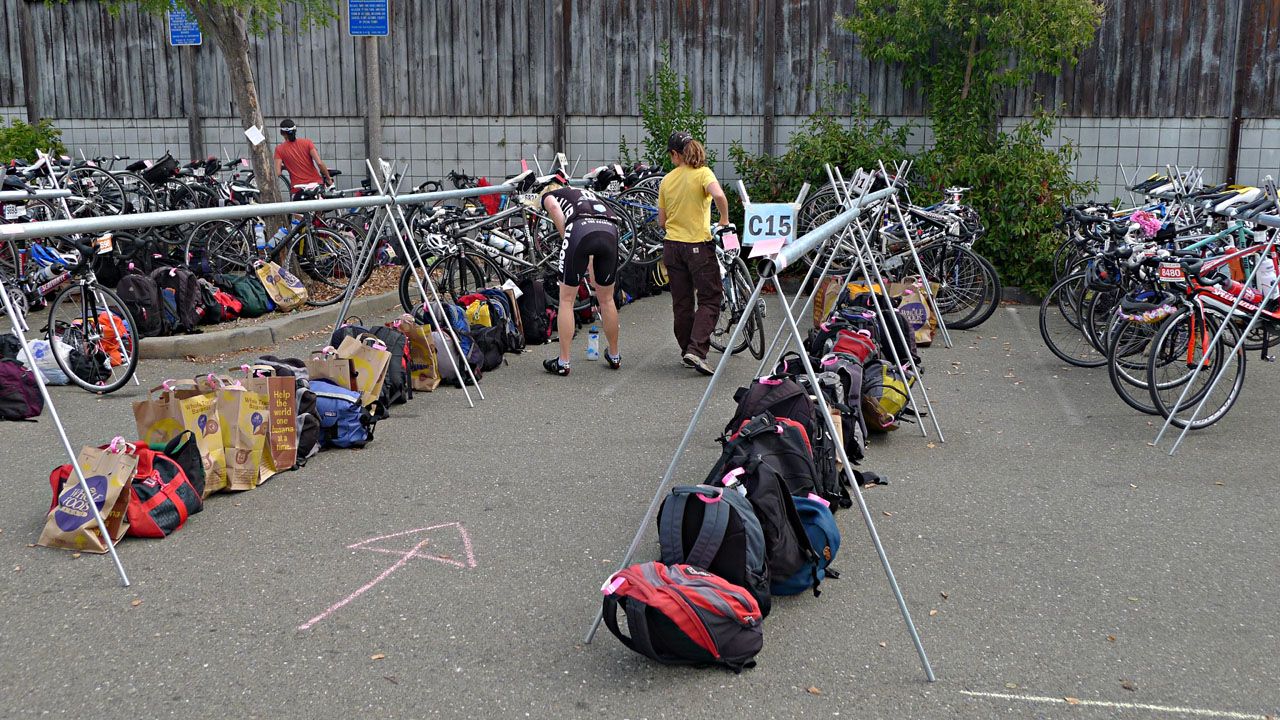
Around noon, before things were too insanely busy. Note the chalk marks to indicate which aisles to walk down and which not to.
Then things picked up.... and picked up more... and got entirely crazily busy... At one point we were almost all full and there was a panic about not being able to find fresh tickets (with rack spots on them). I think early on a few tickets escaped without being collected, so up at the very front there were a handful of spots, so we released the 7th seats on racks for the first zone (red). I think later all of the “seven” tickets were released and many of the “eights” as well.

A sea of bicycles! Picture taken from front. Note two blue canopies for the two exits about one-third and two-thirds through our area). This picture was actually taken when things were starting to slow down just a little bit, these racks were a bit more packed a couple hours beforehand.
I believe we got very close to our 1085--1280 bicycle capacity. We did resort in a few cases to turning a smaller bike or two around to help squeeze one more bike into a rack, but we didn't have to do much of that and had the freedom to do it with only a small bike that wouldn't mess up the walking aisle too much. At one point, Cheryl (one of the main Bike Monkey / Gran Fondo people) came into the bike parking area and asked about finding a bag. "I've got a bib number, can you find the bag? The rider is in the hospital and unconscious." I explained that we could but it would take a long time looking at each bag. The numbers from the bag check ticket, or even just the color of the ticket would help, as would a description of the bag. I think there was some more phone calls and they got the ticket number (at first getting it as a "C" when it should be a "B"), I located the bag and it was whisked away. Later I learned the details. There's a tricky descent ending at Hauser bridge and there'd been a bit of rain out there earlier. It had been the very first rain of the season, so was chock full of extra oily slipperiness. A few riders fell down the ravine and had to be airlifted to the hospital. I was helping find one of their bags (or maybe their partner's bag?). Last I heard they were in stable condition and expected to recover fully. News article day of: 3 GranFondo cyclists seriously injured at Kings Ridge News article next day: 2 GranFondo riders remain in hospital.
Note that we parked about twice as many bikes as we had capacity for, so the system for turning spots over worked out well.

Line of people waiting to park their bikes or get their bikes back. Note my name-tag on my beer in lower right.
The Fondo staff were good at taking care of the volunteers. We all got food tickets to get lunch from one of the food vendors (I got curry because the paella line was too long). Snacks were delivered regularly. Beer from New Belgium Brewing was delivered several times. It's possible that beer was my primary sustenance through the event.
Aftermath
The day was exhausting. I was totally useless the next day. Sore legs, generally tired. Another volunteer that worked only about 4 hours (I worked closer to 10 hours) said her pedometer told her she'd walked 13 miles, so I figure I must've walked a marathon (26 miles; 42 km). We've already been talking a bit about planning for next year. I figured out that the "narrow" 7 foot aisles could have been 6 feet instead because most bikes are closer to 3 feet (in front of the seat when hanging) than 3.5 feet; a little front-of-wheel overlap across racks is ok; and we really never did have to squeeze down those aisles like I thought we might. I believe that using that aisle space for parking would've gained us roughly 100 more spots (9% more, or about 18% more than a standard alternating-on-racks setup). Last year we got a lot of tips (used to fund the annual volunteer appreciation party), but this year not many. Tip jars in more spots would've helped, but I think our usual routine where they wait at the front staring at a half-full tip jar while we retrieve their bikes is more likely to get us tips than this year's routine where we escorted them through and they never stood around waiting. All of the volunteers were awesome, but we were surprised about the high school students. They could've shown up, done the bare minimum and gotten their community service credits, but most of them really worked extra hard, showed initiative in minor adjustments (like somebody to direct people into the right lines) and were cheerfully awesome once they got the hang of things.
Valet Bike Parking Extravaganza! (Part 1: planning & setup)
This is part 1 of a two part series. This part will focuses on all the detailed planning leading up to parking a ton of bikes. Next week will be Part 2 with the actual event where we parked 2551 bikes.
Background
I'm heavily involved in my local cycling advocacy group, and like many bike groups, one thing we do to raise money, encourage more riding, and make ourselves known in the community is Valet Bike Parking. Usually this involves parking 50--100 bikes using 3--10 bike racks (basically an 8--10 foot (3 meter) long metal pipe with legs). A few years ago, our most famous local pro cyclist Levi Leipheimer teamed up with the folks at Bike Monkey (cycling magazine and organizer of local races) to do a big organized ride to raise money for getting the Tour of California to come to Santa Rosa again, and to raise money for Levi's wife's favorite charity. The route is based on a training route that Levi uses, over 100 miles (160 km) with at least 8500 feet (2600 meters) of climbing. There's also 65 mile (100 km) and 35 mile (55 km) options, but over half the riders take the longest option. I've helped in some capacity all three years with the valet bike parking that's set up so that people can enjoy food, beer and a festival after they're done riding. This year I helped out with the planning, especially figuring out the layout. That first year there were 3,500 riders, the second year 6,000 and this year 7,500.
First Year
The first year we were right next to the finish line and the festival (with the beer tent conveniently right in front of us) and parked about 1,500 bikes: more than we'd ever parked at any other event. We ran it similarly to how we'd run an event parking 100 bikes, just with more space and more volunteers. A rider comes in with their bike, a ticket writer fills in a ticket and uses a rack number a runner gave them, and a runner runs the bike to the rack and parks it. At this scale that led to a lot of yelling ("Rack number please?", "I've got 3 spots in C37!") and chaos (5 ticket writers year C37 and now we can't quite fit the bikes). Did I mention chaos?
Second year
The second year we were up a little hill from the finish line and a short walk from the main festival; and we parked about 1,500 bikes, but also handled bag check. I think the distance and visibility is why even with many more riders we didn't park many more bikes. We did a bit of having somebody go and write down rack numbers on tickets for empty spots which involved less yelling and chaos, but there was still plenty of chaos to go around.
This year
This third year we were looking at a spot directly next to the finish line set up to easily guide finishing riders directly into the combined valet bike parking and bag pickup line. We were also being given a smaller space than before so that it could be next to the finish line. And being asked to handle the flow differently with walking people to the bikes so that they exit via a different spot than they enter. The combination of probably many more bikes and less space was greatly worrying. I was thinking we might get as many as 3,000 bikes and was figuring that at best we could fit half that many bikes in the space. Efficient use of the space and re-using spots as soon as they're empty was essential! Additionally, the person who's usually in charge of these things was actually leaving the day before to go on a 5-day fundraising ride. She'd be helping with planning and setup, but wouldn't actually be there the day of.
Planning
First, we used Google Maps to get a rough idea of the space. Also went on site to look around at things. The new space is definitely smaller, but also flat and fairly regular. There's a couple speed bumps and also a few curbed median things on one side that will block placing racks. One side is a wall at least 10 feet (3 meters) high that helps make our security perimeter simpler. I took the rough measurements and worked it out to about 17,000 square feet (1600 square meters).
It's not obvious from these map pictures, but the divider down the middle of the parking lots has 2 gaps. Our first plan was to use one as an entrance and one as an exit. Use some fencing to control the lines (keeping people from walking across the finish line next door), and a station at either end for somebody to watch our perimeter. One end would be where the bag check was. With further talking with the Bike Monkey folks, they really wanted a single entrance and flow for both bike parking and bag check, so that people pick up their bag at the same time and place that they drop off their bike. Entrance would be at the top with the two gaps both used as exits, because that works best with the flow they've got set up outside our area. And in the morning there would be multiple "satellite" bag check areas with bags moved into the main space after the ride starts.
Math
I also started trying to work out some math, both to figure out how many bikes we can fit and how to fit as many as possible. The racks were actually from a third party, the Vineman Triathlon folks. They've got new racks this year. There was some back and forth discussion and we were able to verify that the racks are 10 feet long including the legs (the old style racks lose more space to the legs). Unlike our racks, they don't have a base, so they should be able to straddle a speed bump if necessary. Our space is 299 feet long and 59 feet wide. But we need some space at the front for the entry and space at the back. So real space usable for racks is more like 270 feet by 59 feet.
Our usual arrangement involves racks about 12 feet apart with bikes alternating directions (to maximize how many we can get on a rack). With 10 foot racks that gets about 10 bikes on a rack that will be about 7 feet wide. Add in a 5 foot aisle on either side and put a bunch of those racks in a row. Add gaps that line up to give you perpendicular aisles to get around the space. With a 59 foot wide space, the obvious thing is 5 racks end to end with leaving one lengthwise 9 foot wide aisle. We should be able to fit 22 rows. After accounting for exits and curb structures, that's about 100 racks or 1000 bikes. The plan of alternating the direction bikes go into the racks has a few problems: mainly that you often have to do extra walking to get to the correct side of a rack for a given bike, and bikes often get tangled and it's hard to get a bike out. So I also worked out the math if we did all bikes in the same direction in a rack. I took some measurements and made some educated guesses. It helps immensely that for a large road race all the bikes are a similar type with relatively short wheelbases and similar handlebar widths. I figured out that when hanging from the saddle, road bikes seem to stick about 2 to 2.5 feet behind the saddle and 3 to 3.5 in front. Handlebars are about 1.5 feet wide, which with a tiny bit of squeezing is 7 bikes per rack. By having bikes go in "handlebar first" and not walking down the aisles full of that end of the bikes, we can place racks alternating between 7 feet (closed handlebar aisle) and 9 feet (back of bike and 4--5 feet of walking space), and then taking into account exits and curb structures is 155 racks or 1085 bikes, an 8.5% capacity improvement! So I worked with that second "all the same way" plan, and worked out a diagram with measurements marked out, canopies where they should go, everything planned down to the inch with racks alternating 7 feet and 9 feet apart:
This was a good starting point for a discussion of details. We decided that color coding regions would be a good idea. Somebody pointed out that I should swap which way the alphabet goes because it would make more sense when standing at the front. Many refinements happened. In the end, this was given to the people that were going to be placing the racks:
And this was generated for the on-site map to be posted at various spots:
The plan then is to preprint tickets for each rack+seat, and then have somebody at each exit collect tickets as bikes leave and copy the rack+seat to a fresh ticket that gets sent to the entrance. To my mind this is almost like a multi-threaded computer program. A fresh ticket is a reservation for a place a bike can go. A ticket writer at the front has a pre-pulled set of reserved spots and sends (via runner) those bikes to the spots. When a bike leaves, the used ticket halves are reattached to each other, the identifiers for that spot are copied to a new ticket and that reservation is now open again and sent back up to the front to be sent out again.
Setup
On Wednesday, all the rack tickets were printed. There was some trouble figuring out how to make software work the way we wanted, so the closing time was pre-printed, but each ticket just had a "rack" and "seat" spot and those were handwritten on all the tickets. Part of the bag plan was to use the back area for some bag intake, so we reserved the tickets for those areas to be "released" once bag intake was done and those racks could be set up. We also reserved all the 7th and 8th "seats" on racks so that we didn't have to deal with trying to squeeze that last bike onto a rack unless we were really almost all full up. The primary rack setup happened on Thursday during the day, with vineman folks and some other volunteers. I came along at the end of the day, helped with a few last-minute setup decisions (exits weren't precisely measured on diagrams I had so there were minor adjustments), got counts and measurements for the final map that's above, etc.
Got a chance to take a few pictures, verify exactly where exits and entrances were, etc. I could see that it's difficult to tell a 7 foot aisle apart from a 9 foot aisle, so one of our plans (if it wasn't already; I forget) was to use some chalk to mark things out. To help with navigating the colored sections, in addition to our usual "A1"/ "E33" type rack labels, we'd use some of the same paper as the tags were printed on to color code the racks.
To be continued on Monday...
Bicycles Launched!
After almost a year in beta, bicycles.stackexchange.com has graduated from a beta Stack Exchange website to a full-fledged member of the Stack Exchange family.
What does this mean?
1. We have a beautiful new site design by @Jin:


It's based around "the feeling of riding a bike, rather than focusing on the bike as an object", but has some bicycle themed elements, such as the badges being cogs, the voting and star buttons on questions being road signs and the tags loosely resembling the downtube branding on some bikes.
The logo is a bicycle head badge with a heart, because we love our bikes.
With most Stack Exchange websites, the meta site gets a monochrome version of the main site. Instead we have a night-themed version of the main site, like you're riding home at the end of a long day of riding.
2. Privileges have changed.
Now that we're not a beta site, the privileges required to do certain things have increased. That means there are fewer people to do them, especially closing problematic questions.
- If you see something problematic, please comment and flag. Your moderators will be happy to close, reopen, migrate, protect or delete questions or answers that need it, especially if there's comments and/or flags from multiple users saying that's what needs to happen.
- Vote Early, Vote Often, and Vote Some More. Voting builds reputation, which will help more users earn the privileges that let the site be more user-run than moderator-run.
3. We're linked in the footer of regular Stack Exchange sites
This probably means we'll be getting an influx of new users. I know you're normally friendly and helpful, but please take extra care to be super-nice to the newbies as they come in.
4. One More Thing:
Be sure to check out the Error, CAPTCHA (Human Verification), and 404 Page Not Found pages.







